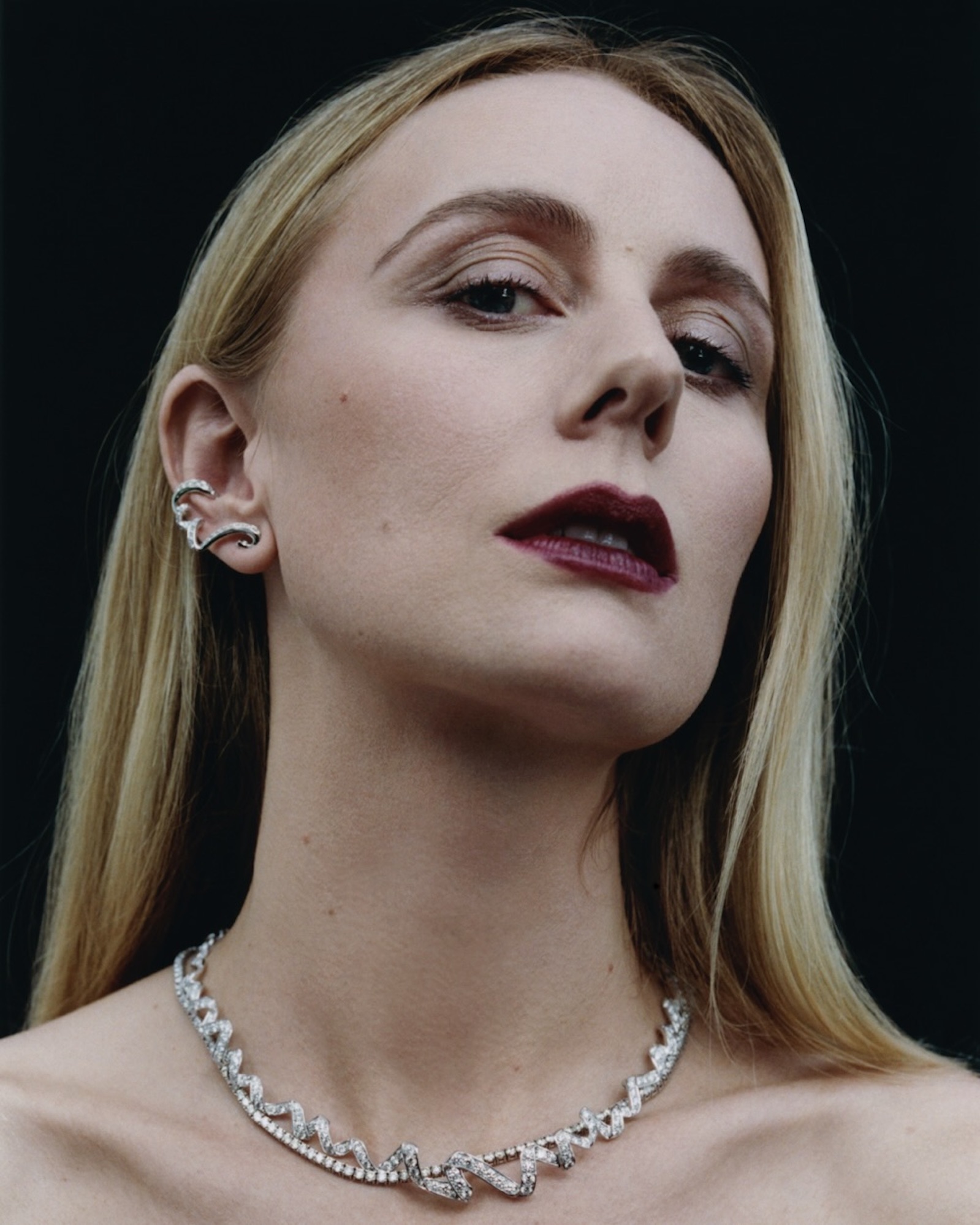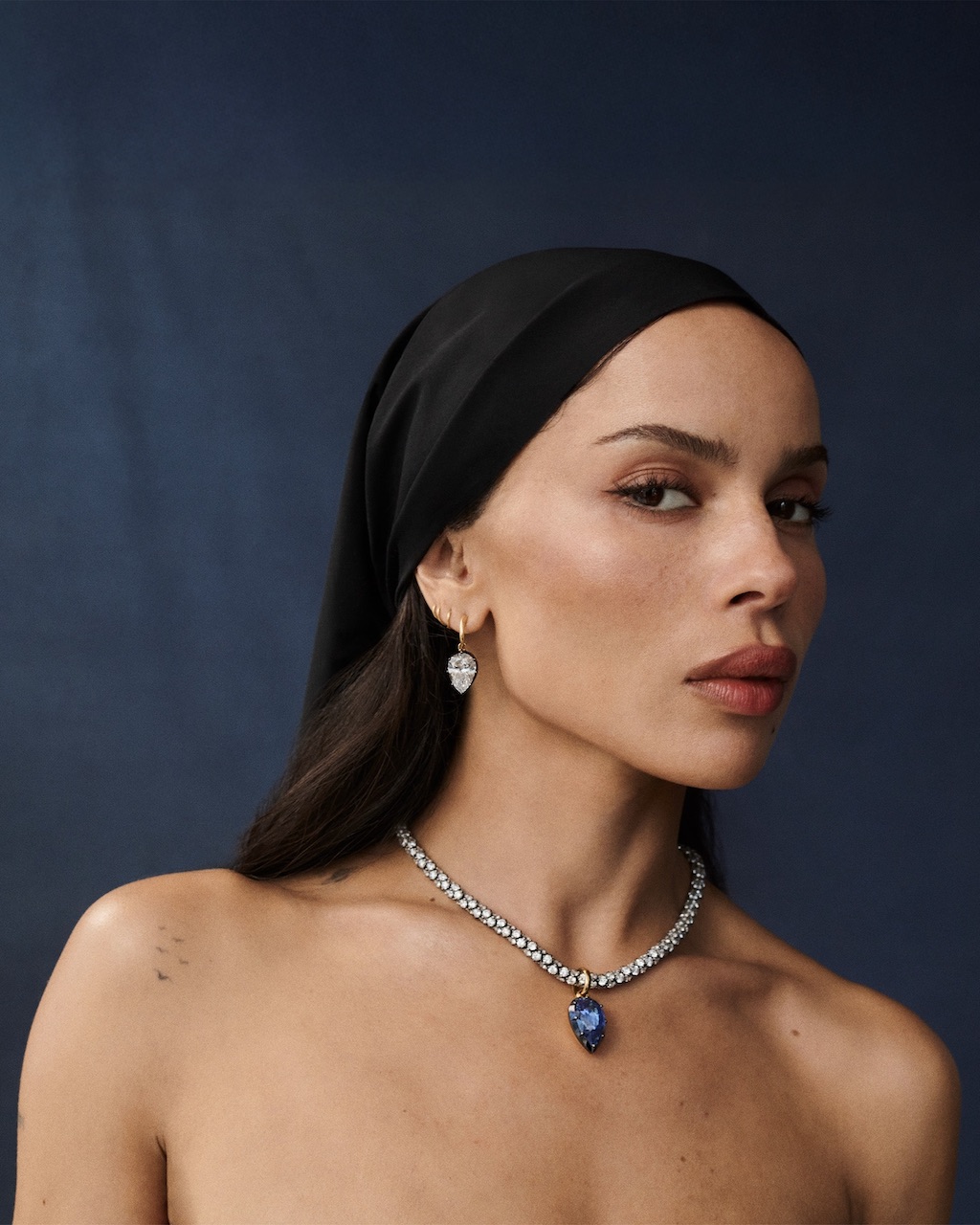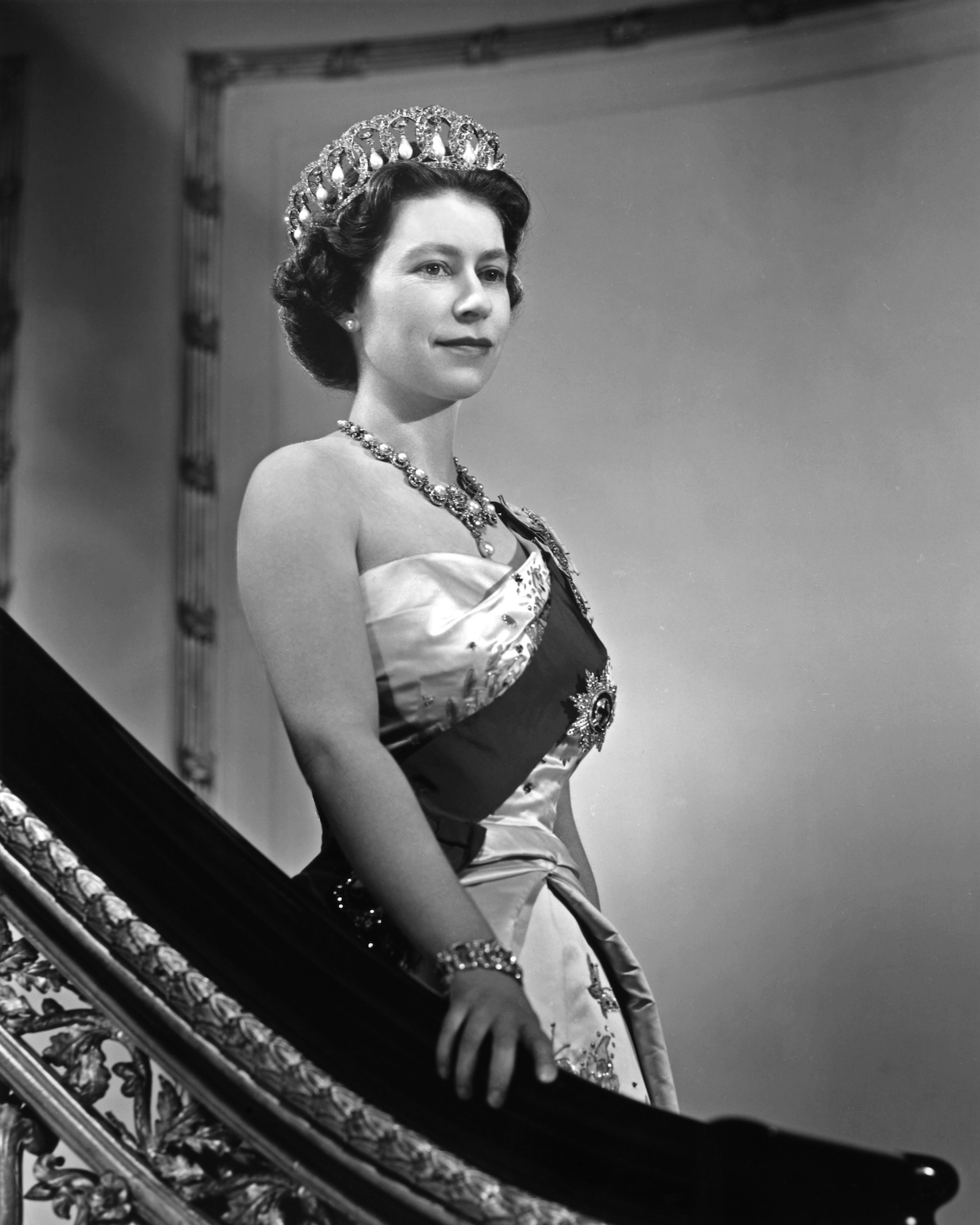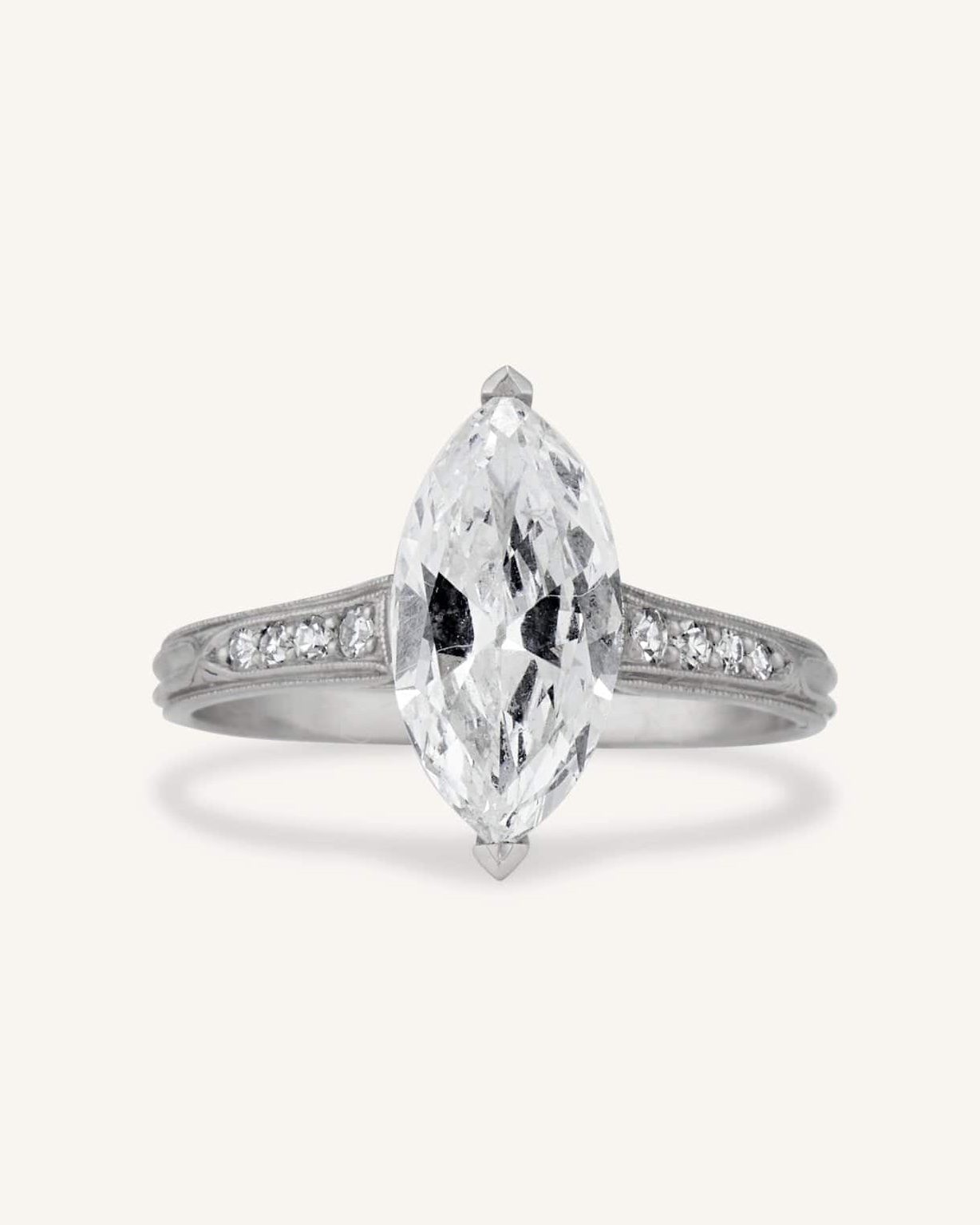Culture & Style
The Expert’s Guide to Scoring Stunning Antique Jewelry Finds
By Lynn Yaeger, July 8, 2025
Photography By Andrew Werner
Learn how to shop smarter, spot the real thing, and build your vintage diamond collection with confidence.
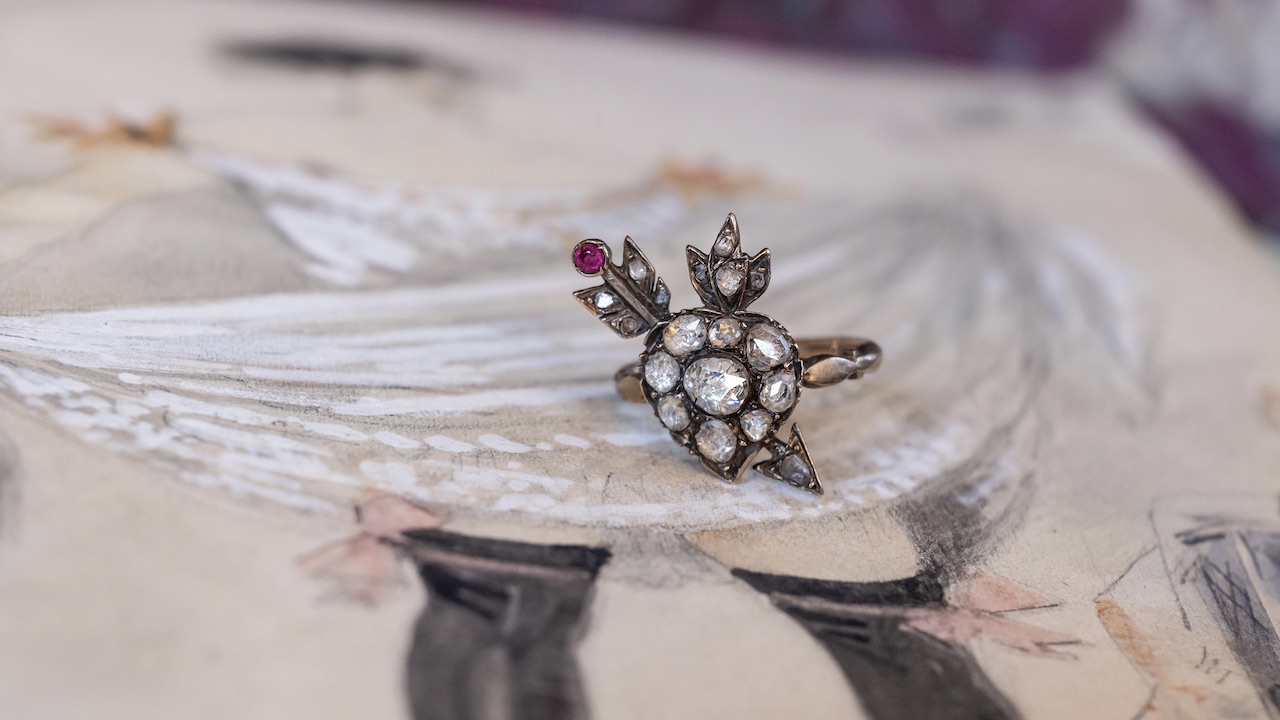
Antique Diamond Heart Ring (Photographed by Andrew Werner)
Antique jewelry is awesome, dripping with history and flaunting their provenance, but there is a world of secrets lurking beneath their diamonds’ shiny facades. How do you know if what you are buying is authentic? How quickly can you learn the difference between Georgian and Victorian, Wiener Werkstätte and Art Deco?
Do you know how to distinguish rose cuts from mine cuts? Is it ok to fool around and find out, maybe changing Retro diamond cufflinks into earrings or an Edwardian stickpin into a ring? And as for those much relied upon 4Cs that rule in modern-diamond-land–you know, Cut, Clarity, Color, and Carat—well, when it comes to antique diamonds, you might say they rely on another set of Cs—Charm, Charisma, Character, and Creativity.
Meet the Expert

- Lynn Yaeger has been writing about fashion, jewelry, and culture for over two decades.
- As a contributing editor at Vogue and vogue.com, Yaeger began her career at the Village Voice as a senior editor.
- She has written for the New York Times, WSG magazine, Architectural Digest, Travel & Leisure, Town & Country, Departures, and more.
- In 2019, Yaeger won the coveted CFDA Media award.
- In her off hours, she can be found haunting the flea markets of the world, searching for antique toys and vintage jewelry.
It takes a lifetime to learn everything about vintage diamonds, but it is a journey full of discovery and wonder. Here, a strictly personal Lynnie-certified tutorial to get you on your way:
Education is Key When It Comes to Antique Jewelry!
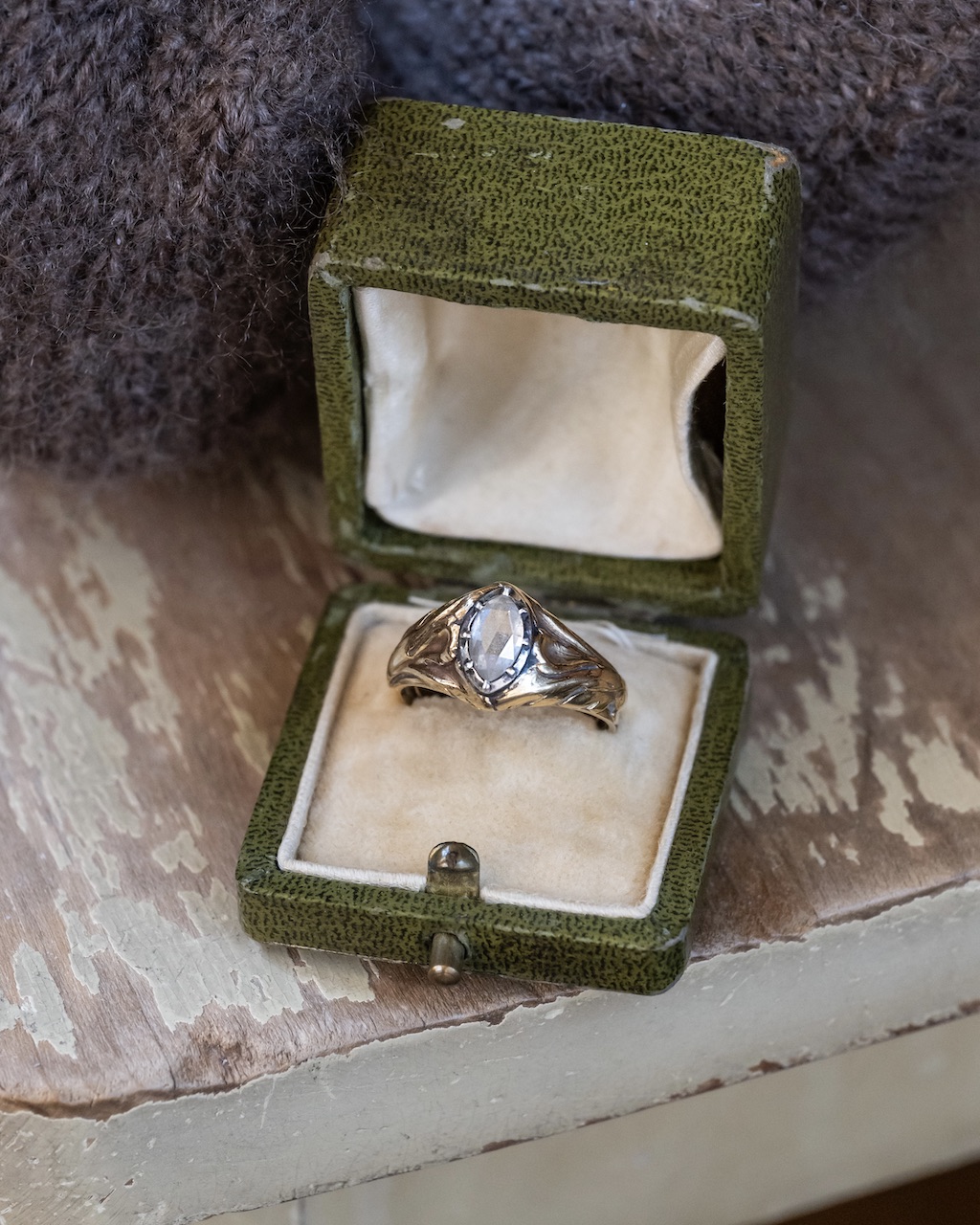
Though upscale antique jewelry stores can be intimidating, gear up your courage and visit them to familiarize yourself with the very best vintage diamonds. What you are looking for is a dealer/mentor who will relish showing you their best finds. Bond with this person! Visit them often and soak up their knowledge.
For me, the darkly glamorous lair of Fabian de Montjoye on the Rue Saint Honore in Paris has afforded hours of special education. For example, the Art Nouveau ring pictured here, Fabian explained, was made in France, but the stone was brought to Paris more than a century ago by the famous Portuguese jeweler Leitão & Irmão. (Still in business!) After all that, how could I not buy it?
When Shopping for Antique Jewelry, Use Your Eyes!
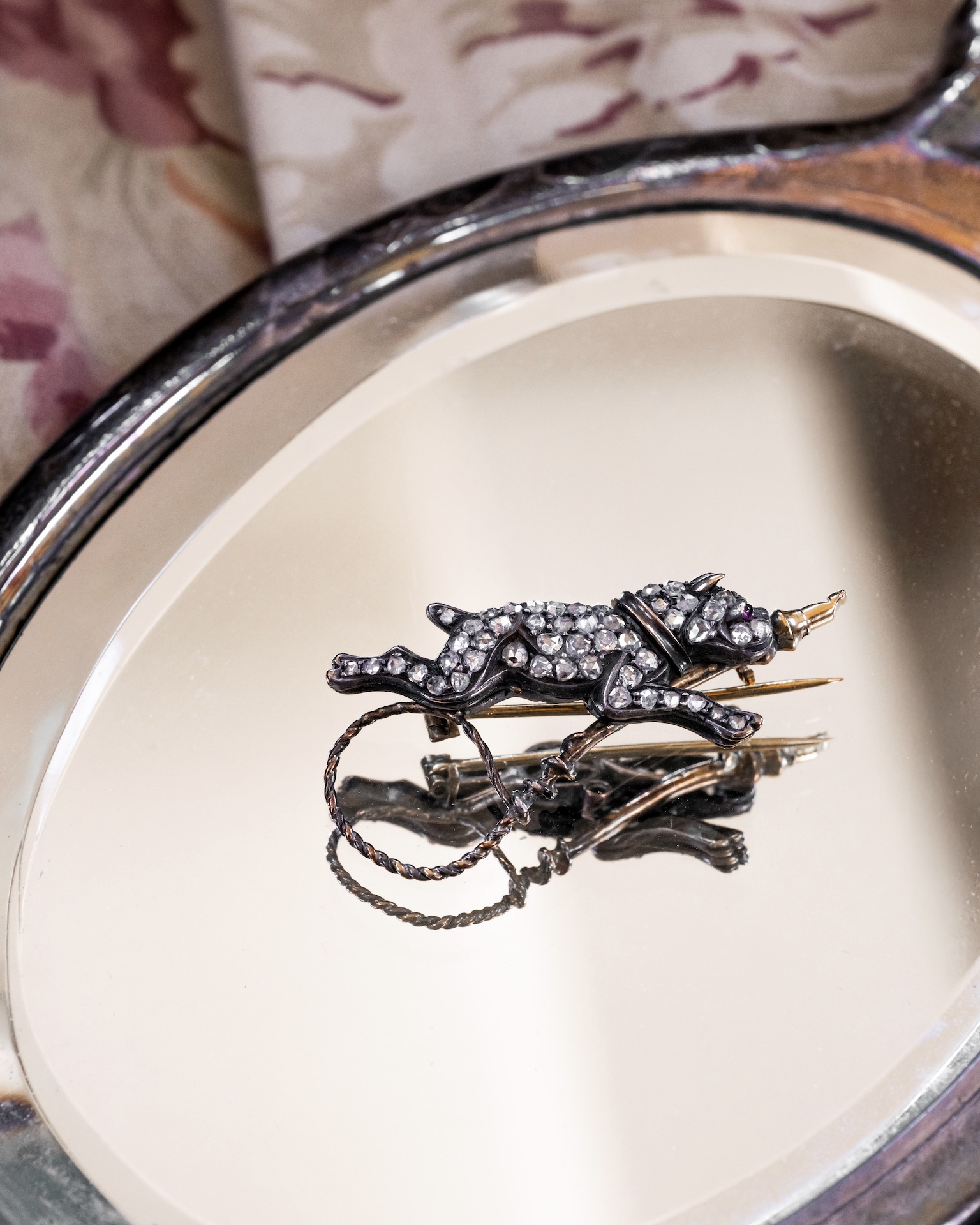
Purchase a loupe and really examine a piece before you fork over your credit card. That magnifier can expose flaws not readily visible to the naked eye. (This can also help you when you are bargaining, and yes, making an offer when it comes to antiques is perfectly ok—just be respectful and reasonable.)
Always turn a jewel over and examine it from all angles. If it’s really good, the back will be as carefully wrought and impressive as the front. (In a very expensive shop not long ago, I flipped over an expensive coral and diamond Art Deco brooch—we are talking many thousands of dollars here—and saw that the stones appeared to be glued (!) into the setting. Huh?)
Be Careful with Engagement Rings!
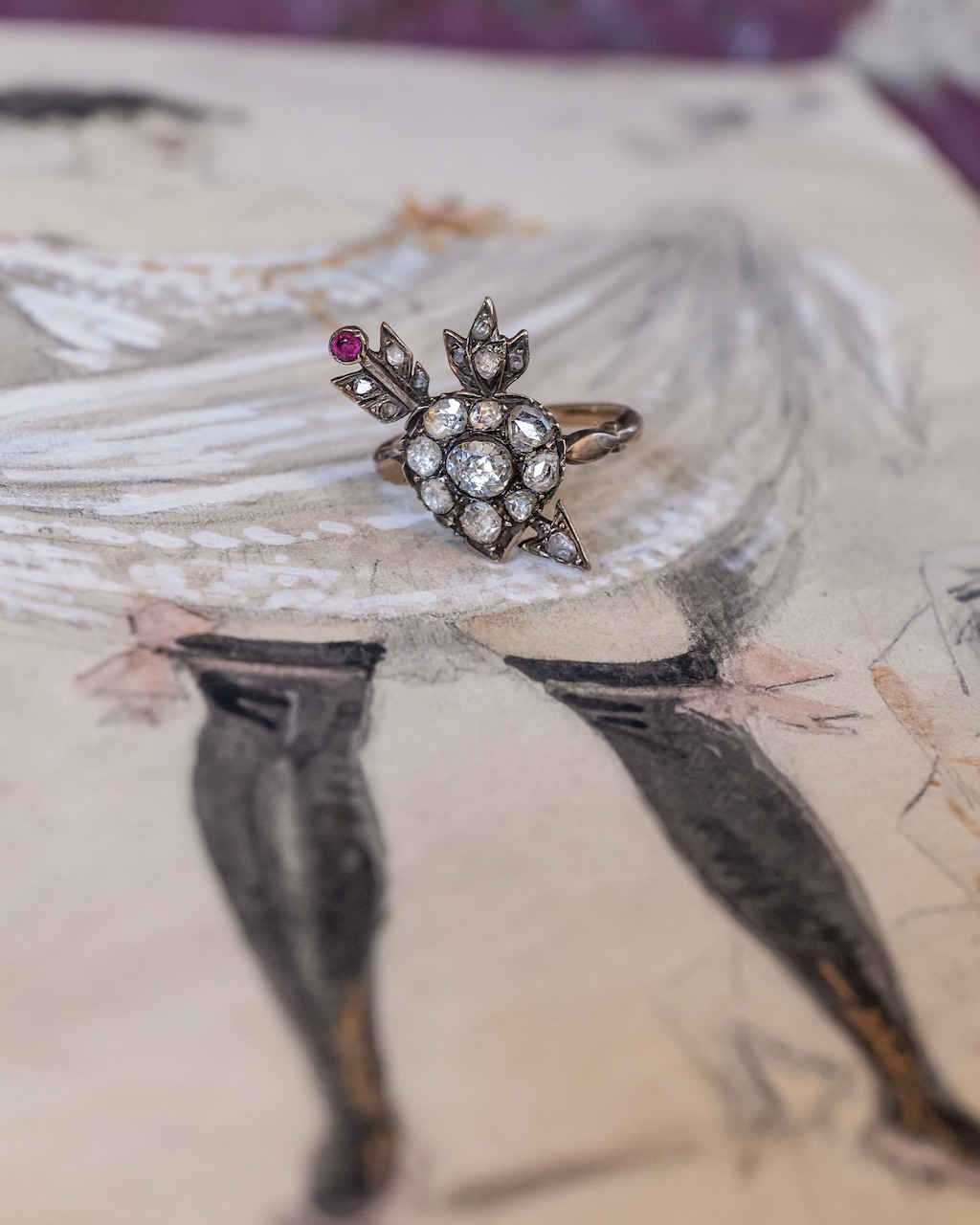
For many people, an engagement ring is by far the most serious and costly diamond they will ever own. The lure of an antique ring can be powerful, but it also comes with a powerful caveat—if it is more than about 100 years old, be super careful! These things are often not up to the wear and care of modern life—stones fall out, foil-backed gems become cloudy when wet (voice of bitter experience speaking here), prongs snag and break.
Believe me—the older the ring, the greater the capacity for heartbreak. And unlike their contemporary cousins, which you can plop on and then go swimming, wash the dishes, or work out at the gym, these girls require serious care and feeding. If you absolutely must have a Georgian or Victorian ring, you can: 1) buy it anyway but wear it for special occasions or 2) avail yourself of the many wonderful new versions that are made in an antique style but with none of the drawbacks.
Consider Transformational Possibilities of Antique Jewelry!
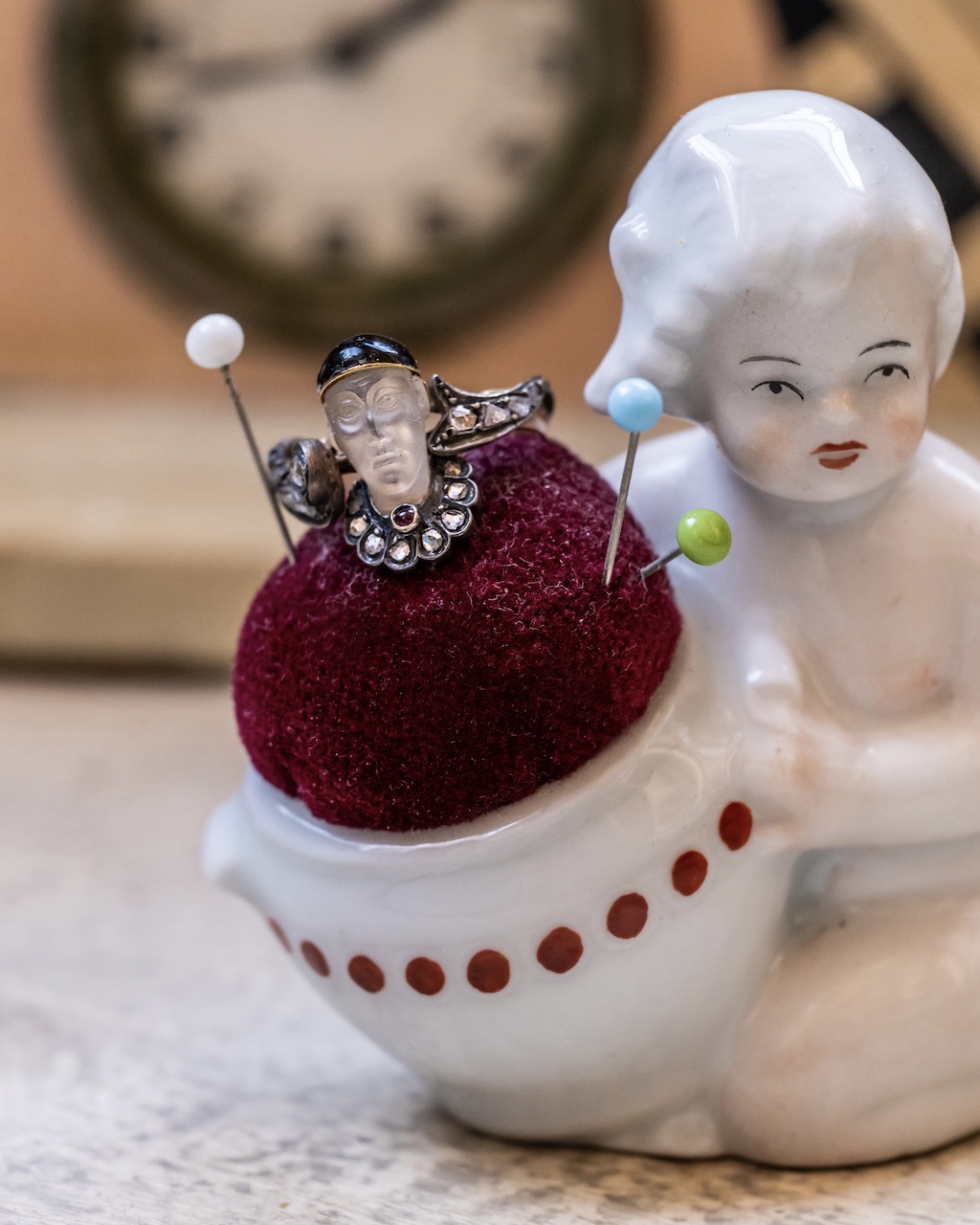
In 1912, the Cheapside Hoard, a cache of over 400 pieces of jewelry from the late 16th and early 17th centuries, was discovered by workmen using a pickaxe to excavate in a London cellar. And you know what? Some of these Elizabethan and Jacobean treasures were in the midst of being transformed from even older pieces.
This goes to prove that there is a long and venerable history of monkeying around—brooches become pendants; diamond-studded clasps can make adorable charms. The moonstone gentleman pictured here started life as a stickpin and was cleverly reimagined by my genius jeweler as a ring. (He added the diamond scarf because why not?)
In the End, Listen to Your Heart!
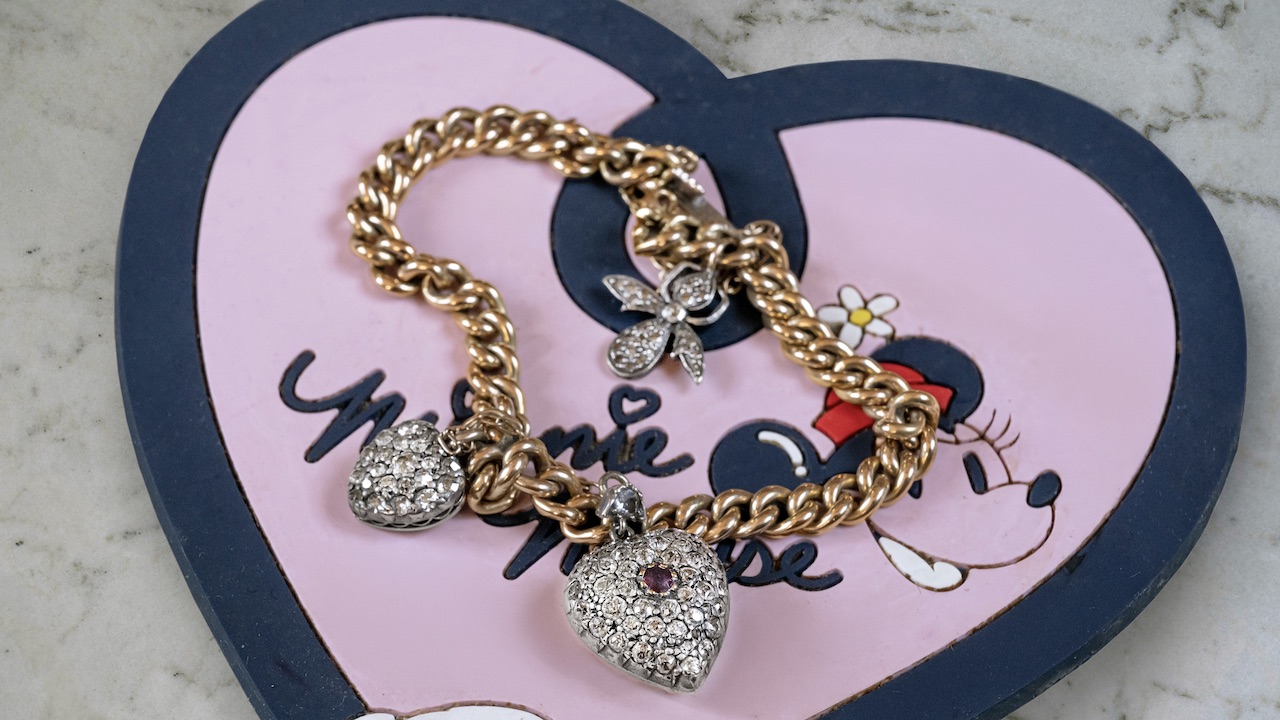
I know, I know—you louped it, and it didn’t seem that great, the price was uncongenial, the dealer was mean, but that antique diamond just spoke to you. Take a deep breath and remember – Who among us doesn’t have a flaw or two? Does this diminish how fabulous we are? Wasn’t it Vincent Van Gogh who purportedly said, “Love what you love”? So go ahead, take the plunge, but at least try to negotiate a better deal.




